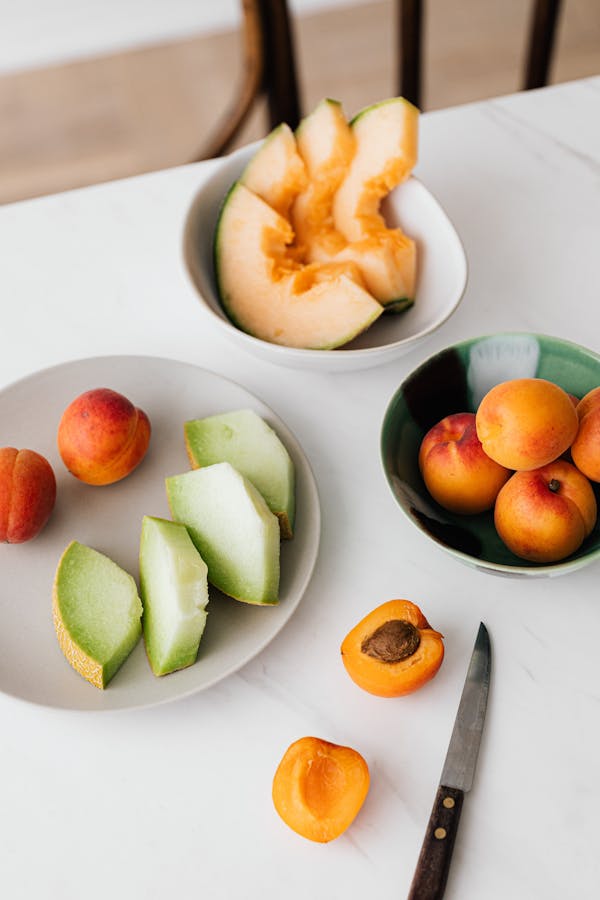
When it comes to equipping your kitchen, a good knife set is essential. Whether you’re a seasoned chef or just starting out, the right knives can make all the difference in your cooking experience. But with so many options available, how do you choose the perfect set?
Understanding Different Types of Knife Sets
Choosing the right kitchen knife set involves understanding the different types of knives available. Each type serves a unique purpose, making it essential to know their functions before making a selection.
Chef’s Knife
A chef’s knife is a versatile kitchen tool used for a wide range of tasks. With its broad blade tapering to a point, it’s perfect for chopping vegetables, slicing meat, and mincing herbs. Most chef’s knives range from 8 to 10 inches in length, providing enough surface area for efficient cutting. High-carbon stainless steel is a popular material choice, ensuring durability and ease of maintenance.
Paring Knife
A paring knife is smaller, usually around 3 to 4 inches long. It’s ideal for intricate tasks like peeling fruits, deveining shrimp, or slicing small vegetables. Its short blade allows for precise control and detailed cuts. Stainless steel is often used for these knives, giving them a sharp edge that’s easy to maintain.
Bread Knife
A bread knife has a long, serrated blade, typically between 8 to 10 inches. It’s designed to slice through bread without squashing it. The serrations grip the crust while allowing smooth cuts through the soft inside. Bread knives work well on other foods with a hard exterior and soft interior, such as tomatoes and citrus fruits. These knives often feature high-carbon stainless steel for longevity and sharpness retention.
Understanding these basic types of knives in a set ensures you’ll have the right tool for the job, improving your overall cooking experience.
Factors to Consider When Choosing Knife Sets
Selecting the perfect knife set involves evaluating various aspects that influence performance and longevity. Considering these factors ensures a well-informed choice catering to your culinary needs.
Blade Material
Blade material is crucial as it determines the knife’s durability and sharpness. High-carbon stainless steel blades, for example, offer an excellent balance between hardness and corrosion resistance. Ceramic blades are incredibly sharp but can chip easily if not handled carefully. Damask steel provides durability and sharpness but usually comes at a higher cost. Assessing the blade material helps in narrowing down the best options for your kitchen.
Handle Comfort
Handle comfort directly affects control and safety during use. Ergonomic handles, such as those made from polymer or pakkawood, ensure a secure grip even when wet. Textured or contoured handles enhance grip, contributing to better control and less fatigue during prolonged use. Trying different handles before purchasing can help determine the most comfortable choice for extended kitchen tasks.
Knife Block and Storage
Knife block and storage play a significant role in maintaining blade sharpness and kitchen organisation. Wooden blocks offer a traditional storage solution, but they can house bacteria if not cleaned properly. Magnetic strips provide easy access and highlight aesthetic appeal but require wall space. In-drawer inserts keep counters clutter-free, but they need adequate drawer space. Choosing the right storage method preserves your knives’ condition and optimises kitchen space.
Popular Brands of Knife Sets
Choosing the right knife set involves knowing popular brands and their unique qualities. Different brands offer distinct advantages for specific culinary tasks.
German Knives
German knife brands like Wüsthof and Zwilling are renowned for their durability and balanced weight. Made from high-carbon stainless steel, these knives resist corrosion and maintain their edge longer. Wüsthof, established in Solingen, Germany, offers precision-forged blades that cater to both professional and home cooks. Zwilling combines traditional craftsmanship with modern technology, ensuring each knife’s durability and performance.
Japanese Knives
Japanese knife brands such as Shun and Global focus on sharpness and lightweight design. Crafted with a higher angle of grind, these knives provide exceptional cutting precision. Shun knives, made in Seki City, Japan, feature layered steel that contributes to their sharpness and aesthetic appeal. Global knives, recognised for their seamless stainless steel construction, offer excellent balance and ease of use, making them ideal for intricate tasks.
American Knives
Prominent American knife brands like Cutco and MAC deliver robust performance and ergonomic designs. Cutco, known for its “Forever Guarantee,” produces knives with a unique Double-D® edge that stays sharp longer. MAC knives, handcrafted in the USA, combine Japanese sharpness with Western durability, offering versatile options for various kitchen tasks.
Maintenance and Care for Your Knives
Maintaining and caring for your knives ensures they last longer and perform better. This section offers insights into sharpening techniques and cleaning and storage tips.
Sharpening Techniques
Regular sharpening keeps your knives efficient. Use a sharpening stone for precise control. First, soak the stone in water until air bubbles stop rising. Hold the knife at a 20-degree angle, and draw the blade across the stone from heel to tip, repeating 5-10 times per side. An electric sharpener provides speed and ease, though it may remove more material. Honing rods realign the blade’s edges, reducing the need for frequent sharpening.
Cleaning and Storage Tips
Clean knives immediately after use to prevent rust and staining. Hand wash with mild detergent and warm water, avoiding dishwashers, which can damage both knives and handles. Dry thoroughly before storing to avoid moisture-related issues. Store knives in a wooden block, on a magnetic strip, or in a drawer insert. Each method protects the blade and ensures safety and organisation in the kitchen.
Conclusion
Choosing the right knife set can truly elevate your cooking experience. By considering the types of knives you need and paying attention to blade materials and handle comfort, you can find a set that suits your culinary style. Proper storage and maintenance are also key to ensuring your knives remain sharp and in good condition. With these tips in mind, you’re well-equipped to make an informed decision and enjoy the benefits of a well-chosen knife set in your kitchen.